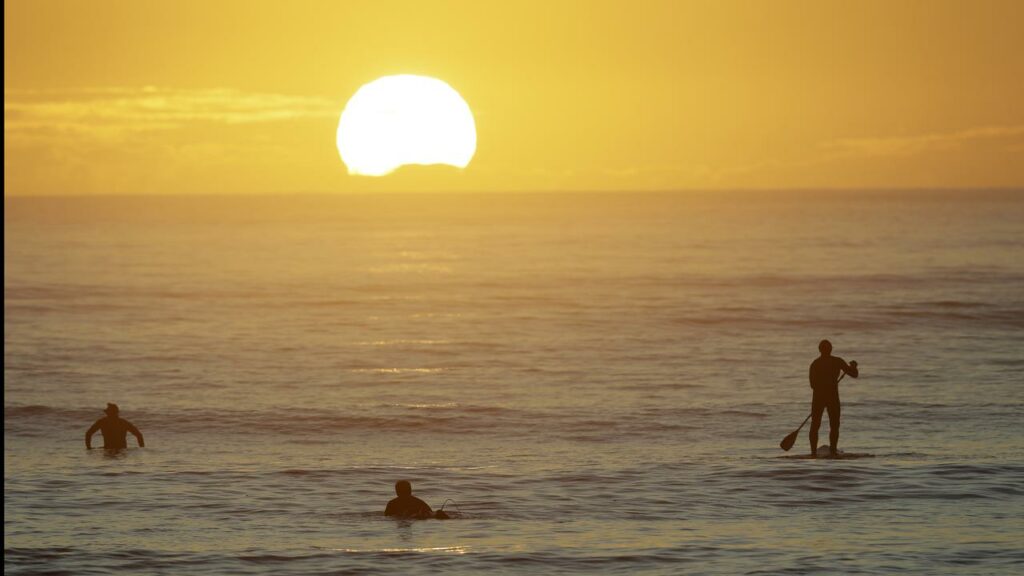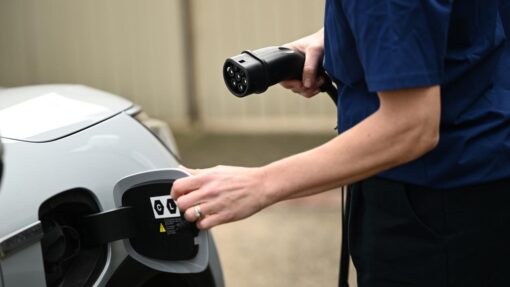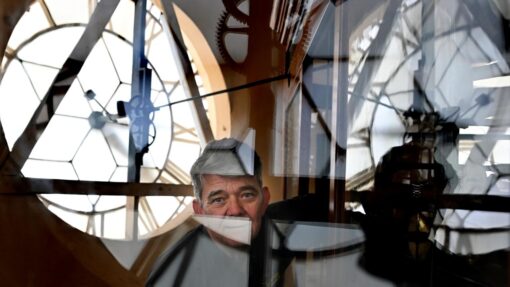NZ’s Sunshine Stakes head to New Plymouth
Ben McKay |

In the land of the long white cloud, sunshine is an envied resource.
So when Whakatane was named New Zealand’s sunniest place for 2020, the town quickly undertook a marketing campaign to attract domestic travellers.
“Like the sunshine coast, but without the Aussies” one ad proclaimed.
“The sunniest place in the world,” another read, with fine print adding “that you can travel to right now”, given New Zealand’s COVID-19 travel restrictions at the time.
Mayors of New Zealand’s sunniest regions call this the Sunshine Stakes – a serious matter that comes with its own trophy and bragging rights.
Each year, regions patiently await data from the climate agency NIWA, which declares a winner based on total sunshine hours in its annual climate report.
Nick Smith, mayor of serial winner Nelson, said he was “very proud” to live in what he called New Zealand’s best climate.
“We covet the fact that this century we’ve won the Sunshine Stakes 12 times,” he told AAP.
Other regular contenders include Blenheim, in Marlborough’s wine country, and Hawke’s Bay capital Napier, known for growing stone fruit, as well as Nelson and Whakatane.
Marlborough is so confident of its climate visitors entering the town are greeted by road signs saying “Welcome to Blenheim: New Zealand’s sunniest place”.
But in 2021, and again in 2022, the mantle passed to surprise winner New Plymouth, which sits in the shadow, and often the shade, of Mount Taranaki – the 2518m-tall dormant stratovolcano in the style of Mount Fuji.
NIWA meteorologist Tristan Meyers said the La Nina event of recent years had changed circulation patterns around New Zealand and brought easterly and north-easterly winds.
“So Taranaki is not really exposed to those east or northeast winds – winds that come down from the sub-tropics or the east, which hit the central ranges in the central plateau of New Zealand, get cloudy over there and then dry out,” he said.
Whakatane mayor Judy Turner – her tongue firmly in cheek – called the Taranaki “ratbags” as she sent the trophy south, already engraved with the new winner’s name.
Down on South Island, Dr Smith admitted sadness at being pipped at the post, with New Plymouth’s 2659 hours of sun outdoing Nelson’s 2581.
“Bit disappointed that we slipped in 2022 in missing out on the title but not surprised just given the horrendous weather we had last year – our worst storm in 30 years,” he said.
Nelson suffered historic flooding when an “atmospheric river” settled over the region in August, bringing massive rainfall and a state of emergency.
“We like to claim that we are the happiest town,” Dr Smith said.
“We’re the sunniest town with the safest town and we’re the fittest town. There are various surveys that we can point to in each of those.
“I’m sure there is some correlation between having a good climate and people getting into the outdoors and enjoying it but also think it’s part of Nelson’s way of life.”
Across the Richmond Range, Marlborough Mayor Nadine Taylor said she was happy to see others claim the Sunshine Stakes for a bit longer.
While long-term NIWA data confirms Nelson is officially New Zealand’s sunniest place, Ms Taylor said Blenheim’s sunshine signage claim went beyond the agency’s data and found its roots in a Maori whakatauki, or proverb.
“We say ‘Kei Puta Te Wairau’, which means ‘the sun always shines in the Wairau’,” she told AAP.
“We like to share the sunniest region around of course because New Zealand is good like that. We’ve got many, many lovely places.”
Changing weather patterns, with the likely end of La Nina this year, suggest the title could head back to Nelson or Blenheim in 2023.
AAP


